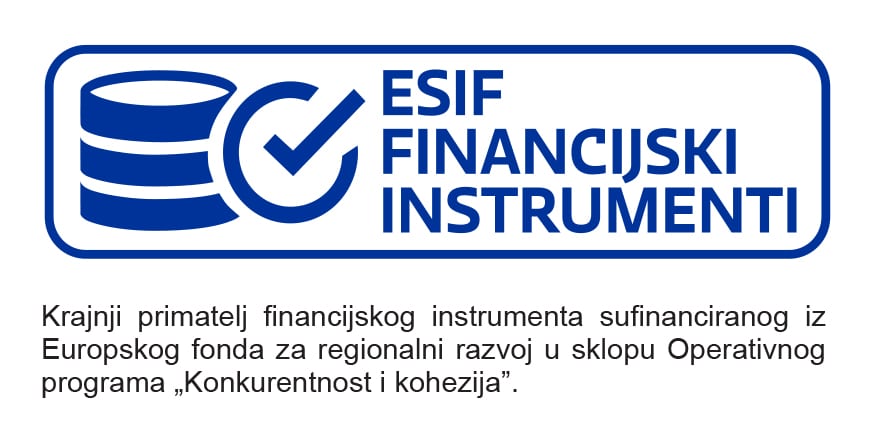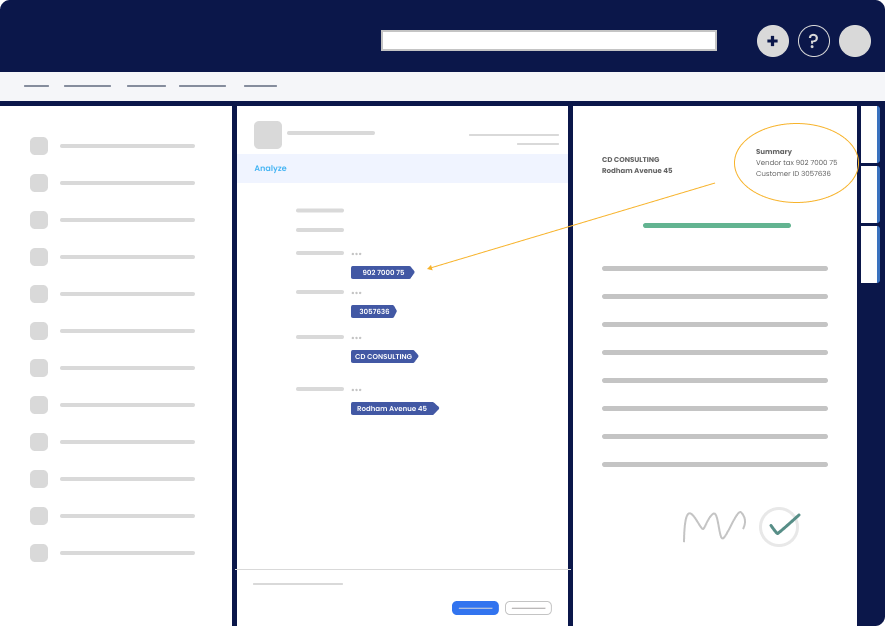This section allows users to specify various conditions for object creation, and define the properties that will be set on the new object.
- Expand New objects.
- Click on Add New object.
- Expand New object [1].
By default, the following fields become available:
- Type
- Object type
- Object class
- Single file
- Duplicates detection
- Properties
- Add source reference on new object
- Add new object reference on source
- Add new object reference on search result
- Advanced settings.
Type #
New object > New object [1] > Type
Specifies how to create an object – either manually, or using another object as a template. Note! A template can be any arbitrary object, it does not need to be marked as a template in M-Files to be used as an object creator template. Choose one of the following options:
- Manual (default): Choose this option to create an object manually. A new object will be created as an empty object.
- FromTemplate: Choose this option to create an object from a template (any existing object can be used as a template). This option reveals additional fields: Template, Rename template files, and Properties for removal.
Object type #
New object > New object [1] > Object type
Displayed only when Type is Manual.
Specify the object type of the created object by selecting from a list of available object types within a particular vault. The object types are referenced by a GUID, ID or alias.
Object class #
New object > New object [1] > Object class
Displayed only when Type is Manual.
Specify the class of the created object by selecting from a list of available classes within a particular vault. If an object type is specified, select from a list of classes within that object type. The classes are referenced by a GUID, ID, alias or external ID.
Template #
New object > New object [1] > Type: FromTemplate > Template
Displayed only when Type is FromTemplate.
Controls how template object is found, offering the following options:
- Source (default): Select this option to select the source object as the template object.
- ReferenceOnSource: Select this option to find the template object by referencing the source object. This option reveals the Template property field.
- StaticObject: Select this option to find the template object statically. This option reveals the Template object section under which the Object type and Object ID are defined.
- SearchResult: Select this option to find the template object by search. This option reveals the Search conditions field.
Template property #
New object > New object [1] > Template: ReferenceOnSource > Template property
Displayed only when Type is FromTemplate and Template is ReferenceOnSource.
Specifies the property on the source object that contains reference on the template object. If multiple objects are referenced, each will be used as a template for new object creation.
Template object #
Displayed only when Type is FromTemplate and Template is StaticObject.
Static template object selector. When expanded, the Object type and Object ID fields are available.
Object type #
New object > New object [1] > Template: StaticObject > Template object > Object type
Displayed only when Type is FromTemplate and Template is StaticObject.
Specify the object type of the template object by selecting from a list of available object types within a particular vault. The object types are referenced by a GUID, ID or alias.
Object ID #
New object > New object [1] > Template: StaticObject > Template object > Object ID
Displayed only when Type is FromTemplate and Template is StaticObject.
Specify the ID of the template object.
Search conditions #
New object > New object [1] > Template: SearchResult > Search conditions
Displayed only when Type is FromTemplate and Template is SearchResult.
Specifies the static conditions for finding a template object. If multiple objects are found, each will be used as a template for new object creation.
Rename template files #
New object > New object [1] > Type: FromTemplate > Rename template files
Displayed only when Type is FromTemplate.
Rename those template files whose name is equal to template’s title to new object’s title.
- Yes (default)
- No
Single file #
New object > New object [1] > Single file
Specifies whether document-type objects will be created as single or multi-file objects. NOTE! This applies to document-type objects that contain only one file.
- Yes (default): If this option is selected, the object will be created as a single object.
- No: If this option is selected, the object will be created as a multi-file object.
Duplicates detection #
New object > New object [1] > Duplicates detection
Specifies whether to check for duplicates when creating objects.
- No (default)
- Yes: This option reveals additional configuring options under the Duplicates detection rules section.
Duplicates detection rules #
New object > New object [1] > Duplicates detection: Yes > Duplicates detection rules [1]
Displayed only when Duplicates detection is Yes.
Sets of properties that must be unique for objects of specified type.
- Expand Duplicates detection rules.
- Click on Add Duplicates detection rule.
- Expand Duplicates detection rule [1].
The following options are available: Object type, Duplicate object behavior, and Unique properties.
Object type #
New object > New object [1] > Duplicates detection: Yes > Duplicates detection rules [1] > Object type
Displayed only when Duplicates detection is Yes.
Object type this key applies to.
Duplicate object behavior #
New object > New object [1] > Duplicates detection: Yes > Duplicates detection rules [1] > Duplicate object behavior
Displayed only when Duplicates detection is Yes.
Duplicate object behavior controls how duplicate objects will be handled.
- Skip (default): The action will be skipped, and a duplicate will not be created.
- Overwrite: The existing duplicate object will be overwritten.
- CreateNew: A new duplicate object will be created.
Unique properties #
New object > New object [1] > Duplicates detection: Yes > Duplicates detection rules [1] > Unique properties
Displayed only when Duplicates detection is Yes.
Specifies the set of properties that must be unique for a new object of this type to be created. Otherwise, an object with matching property values will be updated.
- Expand Unique properties.
- Click on Add Property definition.
The Property definition field is available, to select properties that must be unique.
Properties #
Specifies the properties that will be set on the created object.
- Expand the Properties section.
- Click on Add Property Value.
- Expand Property Value [1].
By default, the following fields are available: Property, Value from, Value type, Value, and Multi-select lookup & multi-line text behavior.
Property #
Properties > Property Value [1] > Property
Specifies the property from the source object that will be set on the newly created object. Select from the list of available properties within a particular vault. The properties are referenced by a GUID or ID.
Value from #
Properties > Property Value [1] > Value from
This option specifies whether to get property value to use in new property dynamic expression from trigger source, from vault search object, or from explicitly specified search. Choose one of the following options:
- Source (default): Searches for the value from the trigger source.
- Vault Search: Searches the vault.
- Specify: Specifies where to get the value from. If selected, additional fields are available: Static search filters for Value from, Dynamic search filters for Value from, Search results sort, Exclude source from search results.
Static search filters for Value from #
Properties > Property Value [1] > Value from: Specify > Static search filters for Value from
Displayed only if Value from is Specify.
- Expand Static search filters for Value from.
- Click on Add Static search filter.
- Expand Static search filter [1].
The Search condition field becomes available. This option specifies the static vault search filters. Multiple search filters are combined with the OR operator (at least one must be satisfied). Multiple search conditions within a single search filter are combined with the AND operator (all must be satisfied).
Dynamic search filters for Value from #
Properties > Property Value [1] > Value from: Specify > Dynamic search filters for Value from
Displayed only if Value from is Specify.
Dynamic expressions in these filters will be resolved from the trigger source. Multiple search filters are combined with the OR operator (at least one must be satisfied). Multiple search conditions within a single search filter are combined with the AND operator (all must be satisfied). NOTE! If static search filters are not set, then it is mandatory to include the target class condition in dynamic search filters.
- Expand Dynamic search filters for Value from.
- Click on Add Dynamic search filter.
- Expand Dynamic search filter [1].
The Dynamic search condition field becomes available.
- Expand Dynamic search conditions.
- Click on Add Dynamic search condition.
- Expand Dynamic search condition [1].
Additional fields become available: Property, Operator, Value, and Mode.
Search results sort #
Properties > Property Value [1] > Value from: Specify > Search results sort
Displayed only if Value from is Specify.
Specifies how to sort search results.
- Expand Search results sort.
The following fields are available: Sort by and Sort direction.
Sort by #
Properties > Property Value [1] > Value from: Specify > Search results sort > Sort by
Displayed only if Value from is Specify.
Specifies the property by which the objects from the search result will be sorted.
Sort direction #
Properties > Property Value [1] > Value from: Specify > Search results sort > Sort direction
Displayed only if Value from is Specify.
Choose between ascending or descending order of the search results.
- Ascending (default)
- Descending
Exclude source from search results #
Properties > Property Value [1] > Value from: Specify > Exclude source from search results
Displayed only if Value from is Specify.
Specifies whether to exclude the source object from vault search results. This option is useful when there are multiple objects with the same name, as it allows users to exclude the object that triggered the rule.
- No (default): The source object will not be excluded from vault search results.
- Yes: The source object will be excluded from the vault search results.
Value type #
Properties > Property Value [1] > Value type
Controls how the property value will be calculated: directly by copying the value from the source or as a function of selected property values.
- Value (default): If this option is selected, you must specify Mode. Additionally, this section includes options for Multi-select lookup and multi-line text behavior.
- Function: This option allows you to perform advanced actions with properties. For example, you can concatenate two properties from the source object (such as first and last name) into a single property on a new object. If selected, the Functions section becomes available, with the following fields: Functions group, Function, and Function parameters.
Multi-select lookup & multi-line text behavior #
Properties > Property Value [1] > Value type: Value > Multi select lookup & multi-line text behavior
Displayed only when Value type is Value.
If the property is a multi-select lookup or multi-line text, this setting controls how the selected value will be updated. There are three options:
- Overwrite (default): The existing value will be overwritten.
- Append: The selected value will be appended to the existing value.
- Remove: The value will be removed.
Properties for removal #
Displayed only when Type is FromTemplate.
Specifies properties on the template object that will be removed from the created object.
- Expand the Properties for removal section.
- Click on Add Property.
The Property field is available, which specifies the property to remove from the created object. Select from the list of available properties within a particular vault. The properties are referenced by a GUID or ID.
Add source reference on new object #
New object > New object [1] > Add source reference on new object
This option adds the source object as a property on the new object, to have a direct link to the source object. When expanded, the Property and Multi-select lookup behavior fields are available.
Add new object reference on source #
New object > New object [1] > Add new object reference on source
This option adds new object as a property on the source object. When expanded, the Property and Multi-select lookup behavior fields are available.
Add new object reference on search result #
New object > New object [1] > Add new object reference on search result
This option adds new object as a property on the search result object. When expanded, the Property and Multi-select lookup behavior fields are available.
Property #
New object > New object [1] > Add source reference on new object / Add new object reference on source / Add new object reference on search result > Property
Property on search result object in which reference to new object will be stored. Select from the list of available properties within a particular vault. The properties are referenced by a GUID or ID.
Multi-select lookup behavior #
New object > New object [1] > Add source reference on new object / Add new object reference on source / Add new object reference on search result > Multi-select lookup behavior
If the property is a multi-select lookup, this setting controls how the selected value will be updated. Choose one of the following options:
- Append (default): If selected, a reference will be appended to the selected multi-select lookup property.
- Overwrite: If selected, a reference will overwrite any existing value in the selected multi-select lookup property.
- Remove: If selected, a reference will be removed from the list in the multi-select lookup property.
Advanced settings #
New object > New object [1] > Advanced settings
- Expand Advanced settings.
The Iterator property is available.
Iterator property #
New object > New object [1] > Advanced settings > Iterator property
Specifies a property on the source to use as an iterator for creating new objects. For example, if Assigned to is used as an iterator, a new object will be created for each assignee.
Upon selecting the property, Iterator item property and Iterator index property become available.
Iterator item property #
New object > New object [1] > Advanced settings > Iterator property > Iterator item property
Specifies a property on the new object that will store the current iterator item. Select from the list of available properties within a particular vault. The properties are referenced by a GUID or ID.
Iterator index property #
New object > New object [1] > Advanced settings > Iterator property > Iterator index property
Specifies a property on the new object that will store an index of the current iterator item. Index numbering starts at 1. Select from the list of available properties within a particular vault. The properties are referenced by a GUID or ID.







